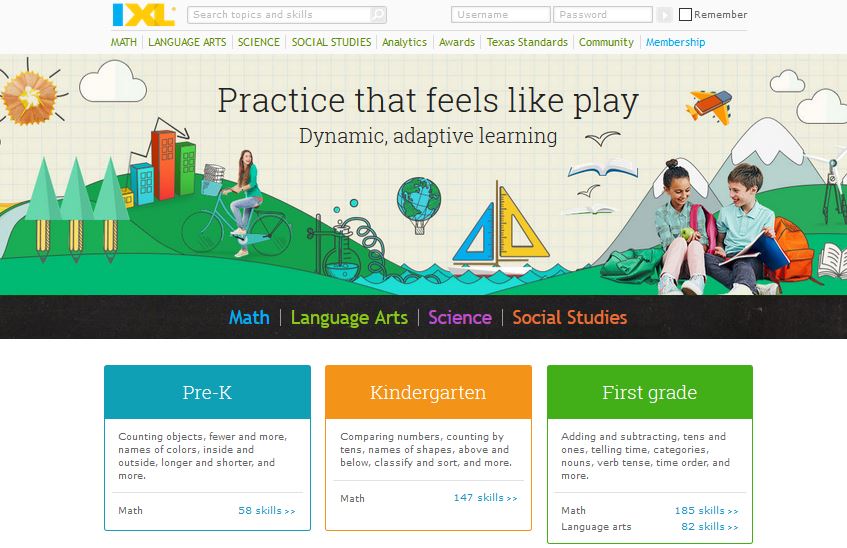Posted by Charles | Posted in walden | Posted on March 10, 2016
Behaviorism is primarily focused on the measurable aspects of behavior (Orey, 2001). In behaviorist learning theory there is a correlation between a behavior and stimulus. Many times the behavior that is observed by students is a cause of certain stimuli. While there has been some adaptation of behaviorist learning theory over the course of a few years, one thing remains consistent and that is the need to adapt teaching methods to reflect today’s learners. It is less acceptable to have students that are passive learners. Today’s classroom should be offering their learners a more active environment in which students are encouraged to engage in critical thinking and problem solving. “Activity is important. Learning is better when the learner is active rather than passive” (Smith, 1999, para. 4). There are many technology resources that can aid in this quest for a more active atmosphere that will also produce critical thinkers in the process.
Most individuals loved to be acknowledged for their effort, this acknowledgment can be as simple as verbal praise or something more concrete (2012). With the aid of technology, teachers have the ability to easily recognize student’s efforts. However, it is important to remember that recognition should be based on a clear standard of performance. Data collection is a great way to provide students with recognition. One method that I have personally used in the classroom is the aid of student response system. Students are prompted at the beginning of the class that there will  be a short assessment following the lesson. Based on the overall performance of the class they could win a “Free Homework Pass.” Upon completing the assessment via student responses system, results are instantly provided to the class. If students have a collective proficiency level of, let’s say, ninety percent they will each receive a free homework pass. This method encourages students to work collectively to meet a common goal. Another method that has shown promise is the use of badges. The use of a social media like resource called Edmodo allows teachers to award badge to students based on their own criteria. If a teacher chooses to award a badge for all assignments being complete, they have that option. Students love the game appeal of a badge and often compete with peers for these badges. There are also sites that allow you to create your own badges.
be a short assessment following the lesson. Based on the overall performance of the class they could win a “Free Homework Pass.” Upon completing the assessment via student responses system, results are instantly provided to the class. If students have a collective proficiency level of, let’s say, ninety percent they will each receive a free homework pass. This method encourages students to work collectively to meet a common goal. Another method that has shown promise is the use of badges. The use of a social media like resource called Edmodo allows teachers to award badge to students based on their own criteria. If a teacher chooses to award a badge for all assignments being complete, they have that option. Students love the game appeal of a badge and often compete with peers for these badges. There are also sites that allow you to create your own badges.
With many students being unsuccessful in their courses, especial math courses, the need for reinforcement and a positive experience is more important than ever. Pitler, Hubbell, and Kuhn (2012) state that, “the instructional strategy of reinforcing effort enhances students’ understanding of the relationship between effort and achievement by addressing their attitudes and beliefs about learning” (p. 57). In Behaviorist Learning Theory, programmed instruction is one form of operant conditioning. There are several examples of technology resources that utilize programmed instruction. One specific example that I use often is a website called IXL. IXL currently offers content in Math, Language Arts, Science, and Social Studies, with various grade levels. Students begin an assignment and are given immediate feedback once the question is completed. If the question is answered correctly they are awarded points and given positive feedback, if the answer is incorrect points are deducted. The difficulty level of each  question is dependent on their progress; questions begin easy and gradually become more difficult. If a student misses a question, not only are points deducted but the difficulty level is also reduced. This reduction helps reinforce their prior knowledge before moving on to more challenging problems. To further aid in this reinforcement, detailed instructions are provided to students on the proper procedure to complete this missed problem. The program uses an algorithm to award and deduct points based on difficulty level, meaning questions are weighted differently. In most scenarios, when students miss a question there is no chance of receiving a one-hundred, this is not the case with IXL. Students can still be awarded a one-hundred on the assignment once the lesson as been mastered. As you can see there are many benefits to programmed instruction and how it aids in student performance. While websites such as the one discussed are great resources, it is important to remember that it does not replace other instructional strategies that are provided by teachers. “When students work with computer technology, instead of being controlled by it, they enhance the capability of the computer, and the computer enhances their thinking and learning” (Orey, 2001, sec 4).
question is dependent on their progress; questions begin easy and gradually become more difficult. If a student misses a question, not only are points deducted but the difficulty level is also reduced. This reduction helps reinforce their prior knowledge before moving on to more challenging problems. To further aid in this reinforcement, detailed instructions are provided to students on the proper procedure to complete this missed problem. The program uses an algorithm to award and deduct points based on difficulty level, meaning questions are weighted differently. In most scenarios, when students miss a question there is no chance of receiving a one-hundred, this is not the case with IXL. Students can still be awarded a one-hundred on the assignment once the lesson as been mastered. As you can see there are many benefits to programmed instruction and how it aids in student performance. While websites such as the one discussed are great resources, it is important to remember that it does not replace other instructional strategies that are provided by teachers. “When students work with computer technology, instead of being controlled by it, they enhance the capability of the computer, and the computer enhances their thinking and learning” (Orey, 2001, sec 4).
A site called Virtual Nerd is often used to supplement the IXL assignments. At Virtual Nerd, students are provided a wide range of math videos to assist students. Virtual Nerd is organized so that students can quickly progress through  each step of the process without having to watch the entire video. Along with the quick access to each step, students can also find quick links to other videos related to the topic. An example of this might include students working on trig ratio. As students are working on trig ratios there may come a point in which students may need Pythagorean Theorem; Virtual Nerd provides a convenient link to a video on Pythagorean Theorem. This is a great site to use with the flipped model.
each step of the process without having to watch the entire video. Along with the quick access to each step, students can also find quick links to other videos related to the topic. An example of this might include students working on trig ratio. As students are working on trig ratios there may come a point in which students may need Pythagorean Theorem; Virtual Nerd provides a convenient link to a video on Pythagorean Theorem. This is a great site to use with the flipped model.
References
Orey, M. (Ed.). (2001). Emerging perspectives on learning, teaching, and technology. Retrieved from http://epltt.coe.uga.edu/index.php?title=Main_Page
Smith, M. K. (1999a). The behaviourist orientation to learning. In The encyclopedia of informal education. Retrieved from http://infed.org/mobi/the-behaviourist-orientation-to-learning/
Pitler, H., Hubbell, E. R., & Kuhn, M. (2012). Using technology with classroom instruction that works (2nd ed.). Alexandria, VA: ASCD.

I think you have some great programs that supply the reinforcement that aligns with the Behaviorist’s approach. I would like to add that it sounds like they also go deeper because they provide the positive emotional experience that Dr. Wolfe speeks about (Laureate Education, n. d.). Students come to us with such a wide range of home lives, I think it is important to consider their emotions as we plan.
I am very interested in your strategy of correlating homework passes and assessments through Edmodo. I have found that students respond well to situations where they can receive immediate feedback and get help if needed. I also intend to look into the IXL program that you mention. On the surface, it has some similarities to Zearn and Front Row Ed which are self-adjusting programs where students can work at their pace and level with the ability to get support if necessary.
Video: Laureate Education (Producer). (n.d.-b). Brain research and learning [Video file]. Baltimore, MD: Author
Thanks, Brenda, you are right students do come with a wide range of emotions.
To clarify, the students are not accessed via Edmodo but rather through the aid of smart response system. Students are provided with remotes to answer a wide range of questions to gauge their level of knowledge. I use it more as a check for understanding at the end of the lesson. Throughout the lesson, students are provided with opportunities to practice a skill. I use structures such as quiz-quiz-trade and rally coach to provide opportunities for cooperative learning. I have been using IXL for some time now and really love it. Student get to work at their own pace and receive only the amount of practice they need.
Thanks Charles for your sharing’s,
Edmodo is a great side. We are now using VLE and managebac for IB students. What ever their name is they all help us to communicate with students and parents. I also liked virtual Nerd and try to use in my lessons. I find very useful software programs, which are arranging difficulty level according to answers of the students. Student’s answer and next question comes according to their correct answer. We are using myimaths and teacher see students progress and how much time they spent in that website.